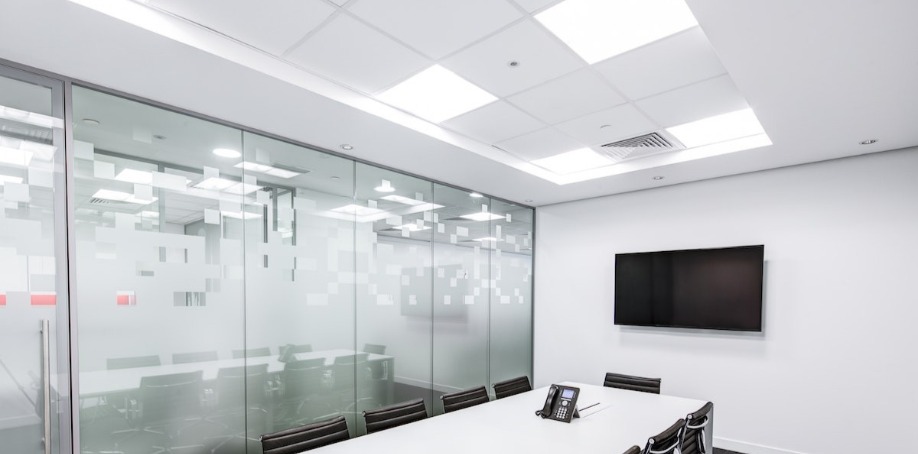
What does it take to make a video conference successful?
At first, you'll probably think of things like a conference schedule and an organizer. But would you even think to include a pro AV setup?
More and more companies are realizing the benefits of pro AV for successful video conferencing. Here's how to take advantage of this opportunity.
Pro AV for Collaboration and Efficiency
AV equipment is important for facilitating the collaboration between employees working collaboratively on a singular project, says CCS Presentation Systems. “In the past, this has been more challenging or virtually impossible unless those employees worked out of the same location. Advances in audiovisual integration technologies has virtually closed that gap.”
Pro AV can separate a bad video conference from a good one. And investing in a quality video conferencing setup is vital. Technology is one of the keys to making a business more friendly to remote workers, as Komal Goyal at 6e Technologies notes.
That said, all pro AV systems are not created equal. If you want a truly effective system, you should aim to get the most quality and cost-effective type of equipment possible. This will ensure that your video conferences run smoothly, which will increase productivity and communication between both coworkers and clients.
And this is why more and more companies are turning to AV over IP. “There is no question that the future of A/V is network-centric,” says Matt Dodd, CEO of Clavia Group.
AV over IP is audio visual equipment that works by connecting to the network. This eliminates unnecessary cables and improves cohesion between multiple systems. Another benefit is that it doesn't rely on existing infrastructure, which might be out-of-date or unable to handle new applications.
“As networks have become more affordable, there's been a dramatic shift to streaming video over IP networks,” says Tom Nyhus, VP of Engineering Emerging Technologies at IVCi.
For video conferencing in particular, AV over IP has a number of benefits that businesses will find useful.
Compact, Scalable Distribution
One benefit of an AV distribution system is that it's more compact and scalable, according to Laurent Masia of Netgear. This is a sentiment that is echoed by many in the industry.
Strategic Communications explains how the scalability of networked AV works in a bit more detail: “Instead of placing HDBaseT transmitters and receivers at all the devices in the room, the AV over IP model calls for an encoder at each source device and a decoder at each destination device.” They go on to state that AV over IP allows for as many encoders and decoders as the network allows, and isn't limited to the signals within a single room.
Elevating your video conferencing to a new level certainly isn't something to take lightly.
The scalability of AV over IP ensures that your video conference will run smoothly, no matter how many people its servicing. You're not confined to a single room at all times, and the conference can be moved if needed. If the system needs to scale up quickly, you don't have to worry about it ruining your budget.
As a matter of fact, budget is another thing that AV over IP excels in.

Cost Savings
"AVoIP provides end users and network operators with significant opportunities for cost savings, flexibility and future proofing. It is also based on standardised and widely supported technologies,” says Chris Scurto of ZeeVee Inc.
Flexibility and future-proofing can just be further cost savings. Because it is flexible, AV over IP ensures that you don't have to buy multiple different systems to achieve different goals.
The amount of money invested in video conferencing will only increase. According to InfoComm International, sales for conferencing “will increase from $33 billion in 2017 to $41 billion by the end of 2022.”
Eventually, employees will come to expect high-quality AV systems for video conferencing. If you don't provide this, you can expect job satisfaction to suffer and turnover rates to increase. Saving money where you can is a sound business decision, as long as you don't sacrifice quality to do so.
Conferencing Quality
Video quality is crucial to virtual conference success. “Video conferencing is only as effective as the weakest link, so if you have a poor AV experience because of insufficient bandwidth, audio dropouts, or poor video, the video conference will be a failure,” explains Ingram Micro Advisor.
Everyone has been in a poor video conference, where no one could hear each other and video kept freezing up.
This is why networked AV is so popular. AV over IP offers both video and audio quality, notes Simon Dudley at logitech.
The right networked AV is able to produce quality sound and clear picture. The right integrator will help you find a system that minimizes lag and makes sure to deliver a great performance every time.
It is important, of course, to make sure you're investing in a network that can handle the equipment. “Video conferencing is unique because it is bi-directional and real-time. It doesn't function well with networks that suffer from packet loss or jitter,” says Chris Böttger of Collaboration Services.
But if you make that investment, you can be sure that AV over IP can support it.

Usability and Ease
Another key feature of AV over IP is its ease of use. “With little to no setup required with current systems, employees can quickly and simply connect and communicate, eliminating the back and forth of e-mail,” Adrienne Blasioli at Pro AV Systems says.
Sometimes, video conferences need to happen fast. When you're battling tight schedules, you can't waste time trying to set up a complicated system.
In the past, traditional AV made this difficult. Each building — and sometimes each room — had a different system, and it could be difficult even for IT departments to manage all of them. This wasted precious time.
But AV over IP simplifies this considerably. And because it's all over the network, it ensures that you won't have to waste time searching around for the right cable or adapter. Instead, you can focus on what's important: your conference.
lexible Video Conferencing for the Future
With AV over IP, AV is finally flexible. No matter what the nature of your conference is, you can be sure that a networked AV system can adapt to match. Instead of being beholden to whatever the system requirements can handle.
Raad Ahmed at LawTrades discusses just how flexible AV over IP can be and what a benefit that can be for conferences. “I've never been a fan of micromanaging conferences, where you're so busy muting feeds and organizing windows that you miss the content. Fortunately, VoIP software has come a long way.”
As Ahmed states, AV over IP software can minimize background noise and provide audio options that give everyone a chance to speak. This ensures that any video conference runs smoothly.
If you're like Ahmed and you'd rather focus on the content of the conference, AV over IP is likely a great fit for your business.
Both video conferencing and AV equipment will continue to advance. Yet, it is important to pick a system that can adapt to the times. Over the years, AV over IP has proven itself to be that kind of system.
“Transmitting the AV signal over the IP network does place additional complications on the network management team,” says Spiros Andreou of CDEC. “It provides massive scalability, flexibility and visibility benefits. Modern audio over IP is low latency, very high quality, and makes the transmitted signal immune to interference, noise and signal loss.”
Images by: Cathy Yeulet /©123RF.com, Pixabay, rawpixel


